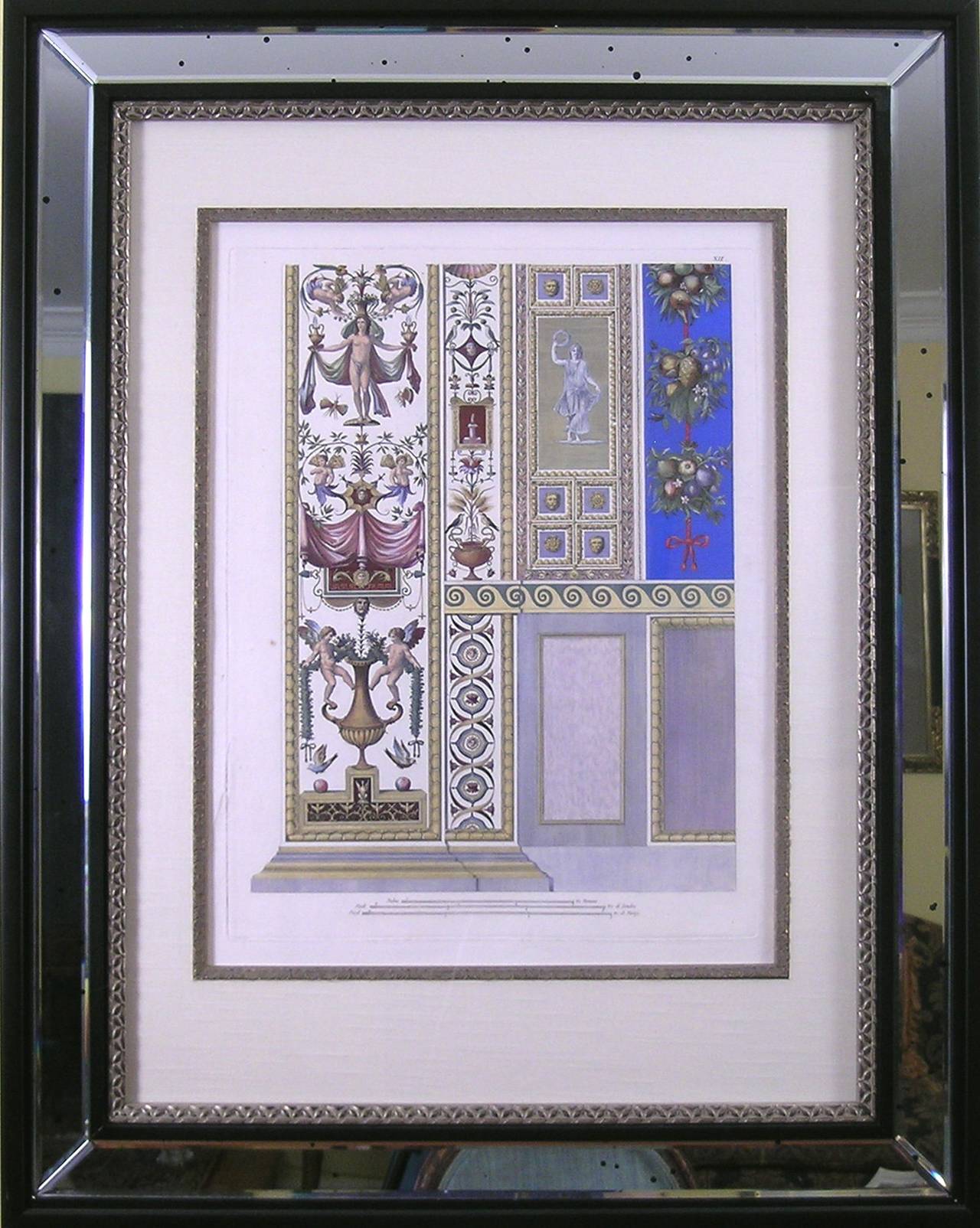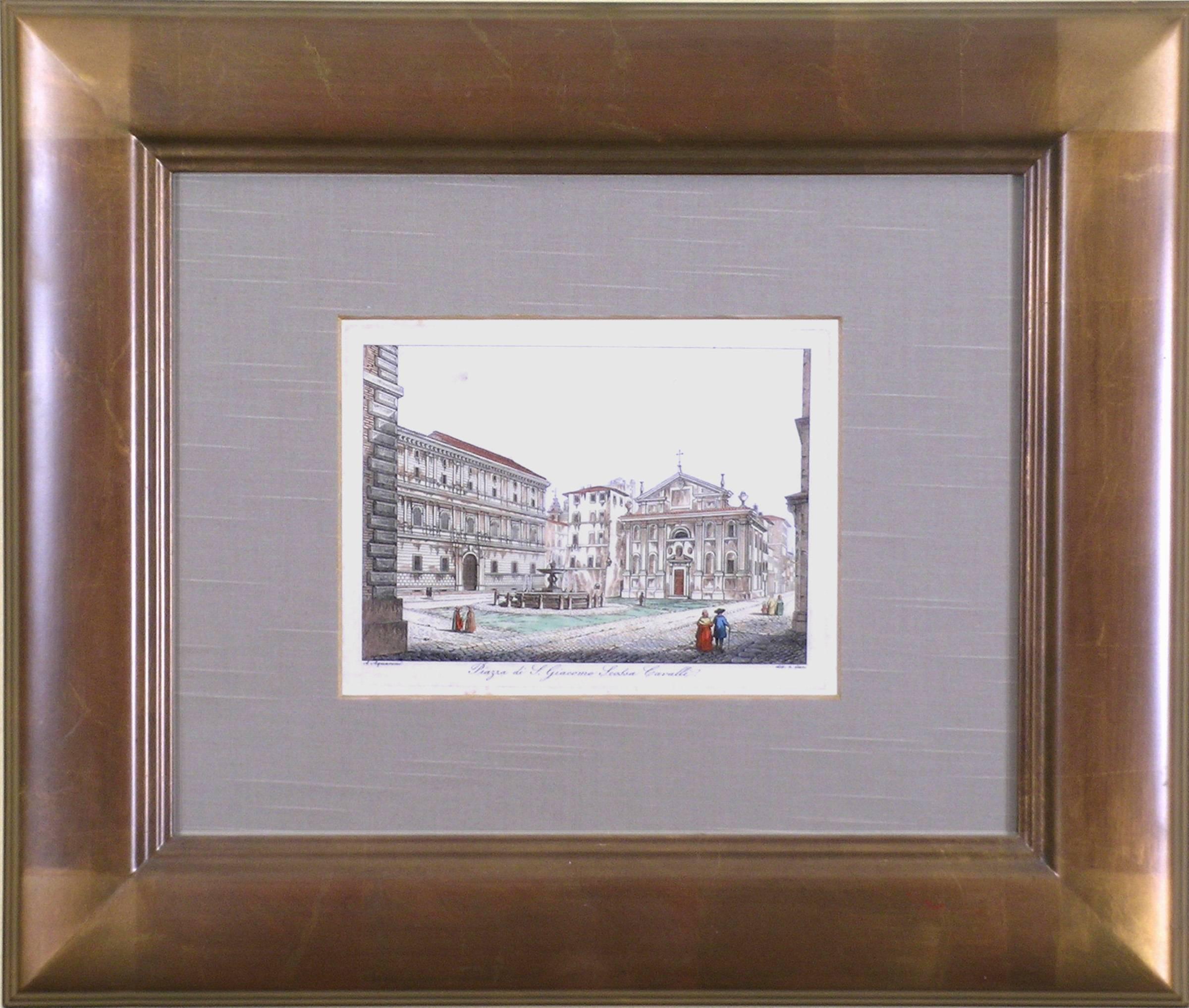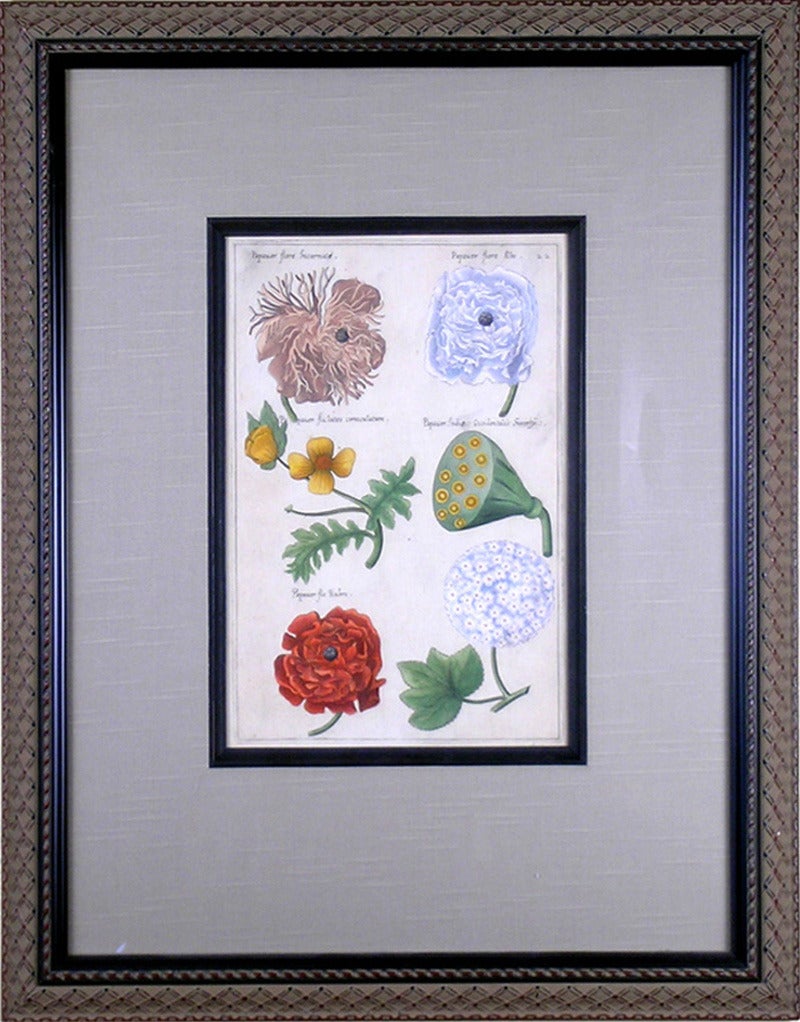Items Similar to Ficus Indica (Prickly Pear Cactus)
Want more images or videos?
Request additional images or videos from the seller
1 of 7
Basilius BeslerFicus Indica (Prickly Pear Cactus)1640
1640
About the Item
BASIL BESLER (1561 – 1629).
Hortus Eystettensis.
Konrad Bauer. Altdorf, 1613, 1640, 1713 – 50.
Copper plate engravings with later hand-color
374 plates. 21 ¼” to 21 ½” x 16” to 18” Unframed.
Hortus Eystettensis is without doubt one of the greatest flower books ever produced in any country. The first great florilegium, it is a landmark work in size and scope documenting pre-Linnaean botanical classification. The splendid stylization and aesthetics make it one of the most powerful botanical works ever produced.
Basil Besler, an apothecary of Nuremberg and botanist who managed the garden of Bishop Johann Conrad in Eichstatt, Germany, used it as an encyclopedic resource as the basis for Hortus Eystettensis, observing and depicting over a thousand flowers, representing 667 species. The Bishop's remarkable garden was one of the most extensive in Europe, containing a huge variety of European shrubs and flowering plants, as well as exotic specimens from Asia and the Americas. He endeavored to collect the new and exotic specimens arriving from far away lands. With the Bishop's patronage, Besler worked both as artist and publisher, directing a team of ten artists and engravers in creating 374 plates over a period of 16 years. Horticultural rather than botanical, it is the earliest pictorial record of flowers in a single garden. Summer, Fall, Winter, and Spring each have their own sections. An unparalleled achievement!
As the first large folio botanical, the plates depict over 1000 flowers, many of them exotics appearing for the first time. The original drawings (most of which are housed in the University Library, Erlangen) took sixteen years to complete. Besler supervised a team of painters and engravers including Domenicus & Raphael Custos, Wolfgang Kilian (stepson of Domenicus), Levin & Friedrich von Huisen, Peter Ilelburch, Johann Leopold, Servaes Raeven, Heinrich Ulrich Heronimus Lederer, et al. This unparalleled group worked between 1608 and 1612 when the last plates went to the printer. The Bishop died on the 2nd of November 1612. Up to that time Besler had received 7500 gold coins in payment. Printed in 1613, only three hundred copies were issued. However, the extensive information and generous depictions would be republished for over a century. For many years it was believed the copper plates on which they were engraved survived until 1817, when they were melted down by the Royal Mint in Munich. However, in 1998, during a reorganization of storage in Vienna’s Albertina Graphic Collection, 329 of the original plates were found. The whereabouts of the remainder remains a mystery.
One hundred and fifty years before Linnaeus created his thorough system of classification, Besler's great florilegium represented an impressive early attempt to classify plants for the benefit of botanists, doctors and apothecaries. Each plant is given a distinct and often descriptive Latin title, and related species are grouped together on the same plate, or over a series of plates. Almost all specimens are shown complete and accurately colored including delineations of their root systems. There were under one dozen copies colored at the time of publication probably for royal or wealthy patrons. Several happily survive in museums and libraries. Today we use them as a basis for coloring.
While Besler's work is obviously motivated by a scientific impulse to document and describe a remarkable collection of species, the beautiful presentation and dramatic stylization of the illustrations also convey a sense of the visual grandeur of the Bishop's great garden. By 1633 the famous garden had become a vegetable plot. Ultimately, this renowned botanical achievement would be plowed under and lost for all time. All the more reason to revere Besler's dramatic endeavor. Each specimen is placed on the page with an artist's understanding of formal and spatial relations. Most notable, the stylized depiction of foliage and root systems betrays a lively baroque sensibility, as the plants seem to dance across the page. The Besler "Florilegium" will hold forever in time a magnificent era of horticulture.
Reference: Hortus Eystettensis: The Bishop’s Garden & Besler’s Magnificent Book. Abrams. NY, 1994.
The Besler Florilegium: Plants of the Four Seasons. Abrams. NY, 1987.
- Creator:Basilius Besler (1561 - 1629, German)
- Creation Year:1640
- Dimensions:Height: 29.25 in (74.3 cm)Width: 25 in (63.5 cm)Depth: 2 in (5.08 cm)
- Medium:
- Movement & Style:
- Period:
- Condition:Framed to museum specifications using archival matting, backing, hinging. Glazed with ultra-violet filtering Plexiglas.
- Gallery Location:Florham Park, NJ
- Reference Number:
About the Seller
5.0
Vetted Seller
These experienced sellers undergo a comprehensive evaluation by our team of in-house experts.
1stDibs seller since 2014
163 sales on 1stDibs
Typical response time: 2 hours
- ShippingRetrieving quote...Ships From: Florham Park, NJ
- Return PolicyA return for this item may be initiated within 1 day of delivery.
More From This SellerView All
- BeansBy Matthäus Merian the ElderLocated in Florham Park, NJMATTHAUS MERIAN, the Elder (1593-1650) Der Fruchtbringenden Gesellschaft Nahmen. Frankfurt, 1646. Engraving with Later Hand-Color. 400 Plates. Image Size 4.5” x 5.25” Unframed. ...Category
18th Century and Earlier Academic Still-life Prints
MaterialsEngraving, Watercolor
- Raphael's Loggia Plate XII. Pilaster Bottom. Priced as a pair with Pilaster TopBy Gaetano SavorelliLocated in Florham Park, NJRAPHAEL. Raffaello Sanzio d’Urbino. (1483 – 1520) Delle Logge di Rafaele nel Vaticano. Gateano Savorelli, artist. (1732- 1791) Ludovico Teseo, draughtsman. (1731-1782) Pietr...Category
18th Century and Earlier Academic Prints and Multiples
MaterialsGouache, Watercolor, Engraving
- The Blue Passion FlowerBy Dr. Robert John ThorntonLocated in Florham Park, NJDR. ROBERT JOHN THORNTON (c1765 – 1832). The Temple of Flora. London, 1798-1810. Painted by Reinagle, Henderson, Pether, et. al. Engraved by Ward, Caldwall, Earlom, et. al. Aq...Category
18th Century and Earlier Academic Prints and Multiples
MaterialsEngraving, Watercolor
- Piazza de San Giacomo (Italy)By Antonio AquaroniLocated in Florham Park, NJROMA (Italy) A. Aquaroni. Engraving. Modern Hand-Color. Rome, Italy 1750. Ever wonder what pre-dated the postcard? By the mid-eighteenth century, travel and exploration had be...Category
1750s Academic Prints and Multiples
MaterialsEngraving, Watercolor
- Papauer Flore. (Poppy Flower)By Emanuel SweertLocated in Florham Park, NJEMANUEL SWEERT (1552-1612) Florilegium, tractans de variis floribus. Frankfurt, 1612. Seed and Plant Catalogue. Frankfurt, through 1647. Academic Florilegia. Copper Plate Engrav...Category
18th Century and Earlier Academic Prints and Multiples
MaterialsWatercolor, Engraving
- Alphabet Letter "K"Located in Florham Park, NJAn Alphabet of Capital Letters: Selected from the Illuminations of Italian Chorale Books of the Fifteenth and Sixteenth Centuries. Arundel Society. London, 1862. Engraving. Printed...Category
1860s Academic More Prints
MaterialsGold
You May Also Like
- Venice: View of the Grand Canal - Héliogravure, 1975By Giovanni Antonio Canal (Canaletto)Located in Paris, FRAfter Giovanni Antonio Canaletto Venice: View of the Grand Canal Héliogravure after the original etching (Atelier Jacomet) Printed signature in the plate On paper Vergé de Hollande,...Category
1970s Academic Landscape Prints
MaterialsEngraving, Etching
- Flowering Peppermint Plants: A 17th C. Besler Hand-colored Botanical EngravingLocated in Alamo, CAThis is a hand-colored copper plate engraving entitled "Pulegium Cervinum, Pseudo Pulegium Struthium, Pulegium Regium", depicting flowering Peppermint, Weld and Pennyroyal plants res...Category
1640s Academic Still-life Prints
MaterialsEngraving
- “Haughton in the County of Nottingham” (Near Newark Upon Trent)By Johannes KipLocated in Southampton, NYAn original hand colored engraving by Johannes 'Jan' Kip (1653-1722) of Haughton in the County of Nottinghamshire, one of the seats of Prince John Duke of ...Category
Early 1700s Academic Landscape Prints
MaterialsEngraving
- “Scene in Union Square, New York on a March DayBy Winslow HomerLocated in Southampton, NYOriginal wood engraving on paper. Taken from Harper’s Weekly, April 7, 1860. Signed “Homer” in the plate. Condition is good. Slight staining lower left. Very slight tear to the l...Category
1860s Academic Figurative Prints
MaterialsArchival Paper, Engraving
- “Innocent Captivation Amusement Pastorale”By Anthony CardonLocated in Southampton, NYOriginal stipple engraving on a verge type of hand laid paper. The overall size of the engraving is 15.75 inches by 12.75 inches The image size of the engraving is 14 inches by 12 i...Category
Early 1800s Academic Figurative Prints
MaterialsEngraving, Laid Paper
- Portrait of a man by Hans Berger - Drawing 44x50 cmLocated in Geneva, CHWork on paper Ed: 1 /100Category
Early 20th Century Academic Portrait Prints
MaterialsEngraving, Crayon
Recently Viewed
View AllMore Ways To Browse
Antique Pear
Antique Pears
The Bishop
Vegetable Print
European Botanical Art Prints
Asian Pear
Asian Pears
Nuremberg Print
Pear Prints
Raphael Engraving
Copper Engraving Germany
Botanical Book Prints
Cactus Plant
Cactus Prints
18th Century Botanical Plate
Foliage Engravings
Copper Engraving Botanical
Large Antique Botanical Prints




